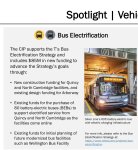cubbe8
Active Member
- Joined
- Mar 18, 2022
- Messages
- 330
- Reaction score
- 563
Wasn’t it because one of the trains derailed on one of the crossovers?Also - they tried this on the OL north of Sullivan for a while. I think they were shuttling Wellington to Sullivan or Wellington to Oak Grove. They stopped but it was never clear to me why.



